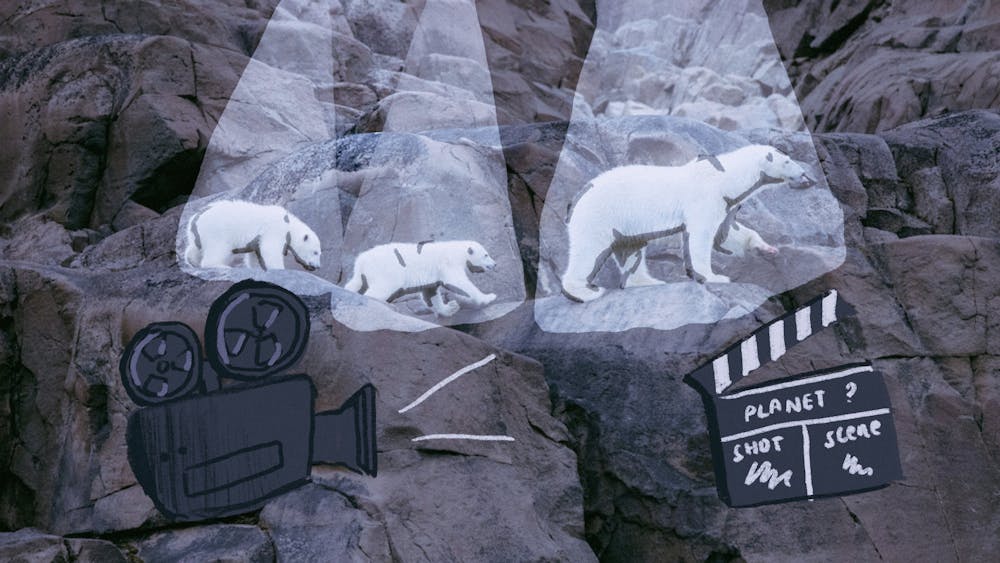With skies darkened by wildfire soot, melting glaciers, and oceans littered with plastic, it’s easy to feel like the world is burning. Nature documentaries are an escape from this reality where it feels like all we do is threaten the outdoors. Last week, Netflix premiered Our Planet II, the sequel to the award–winning nature documentary series, Our Planet. The episodes showcase the stunning imagery associated with the genre, but also acknowledge the threat that humans pose to our environment. Our Planet is one of many nature documentaries on streaming services. Wild Babies, Dancing with the Birds, Life in Color, Chimp Empire, Our Great National Parks, Wonders of the Sea, Magical Andes … the list goes on. So why do streaming services keep churning out nature documentaries, and what does Our Planet II have to say about this growing genre?
Nature documentaries have filled a niche in broadcasting for many years, but it wasn’t until recently that they’ve seen such broad success. The BBC began to make mainstream nature documentaries in the 1950s, and Sir David Attenborough quickly became the face of nature documentaries with his series Zoo Quest and his wildly successful 1979 documentary, Life on Earth. By the 1980s, PBS was regularly broadcasting its television program, Nature. Television channels like Discovery and Animal Planet cashed in on the success of nature content. Today, streaming services Netflix, Disney+, and Amazon Prime offer a library of old and new nature documentaries. In 2016, the first episode of Planet Earth was the most watched natural history program in the UK for more than 15 years, drawing in 9.2 million viewers to BBC and becoming the 6th most watched episode on the channel that year.
But nature documentaries now offer more than an escape to calming landscapes and exotic animals. The past fifty years have seen a steady increase in messaging about conservation and anthropogenic impacts in nature documentaries. In the past decade, 47% of nature documentaries had a conservation message and 40% mentioned the impacts humans have on the environment. Streaming services are in a unique position to cash in on this interest in the relationship between humans and the environment since these platforms have excellent data on the viewing habits and preferences of their subscribers. To retain subscribers, streaming services invest in original content. While streaming platforms such as Netflix, Amazon Prime, and Hulu don’t release ratings on their shows, the increase in original nature documentaries, especially those that acknowledge human impacts, point to a big appetite for documentaries with an environmental message.
Our Planet is representative of that growing genre, pairing soothing nature scenes with compelling narratives about saving wild spaces. Its second installment is narrated by the king of nature documentaries, (more accurately, the knight) Sir David Attenborough. The season focuses on stories of animal survival throughout the world, connected by common themes such as migration and the power of the sun.
Our Planet acknowledges anthropogenic forces in small details, including animations of a turning globe with light–up, electrified continents. Then there are the stories of animal survival. While some are presented in a vacuum devoid of humans, most acknowledge the way people have impacted animals’ lives. The latest season follows a family of polar bears struggling to swim through the summer arctic waters devoid of ice floats, a herd of elephants searching for a new territory after forest fires destroyed their forest, and a hatchling albatross growing up on a beach littered with plastic.
The series is less of a salve for the guilt of man–made climate change and more of a call to action. The gut wrenching scenes of animals struggling to survive in a world threatened by us will stick with viewers after the series ends. Our Planet offers a resonant display of humankind's impact on the natural world.
It’s crucial to note, however, that nature documentaries have been popular long before environmentalism became trendy. Part of the appeal of nature documentaries lies in their universality: Nature documentaries’ educational lens and stunning visuals make them appropriate for all ages (although most childhood nature documentary enthusiasts likely have one or two scenes of big cats tearing apart a kill seared in their mind). The largely visual aspect of nature documentaries makes them relatively accessible across languages. Plot lines are ubiquitous and recognizable across cultures and languages. Everyone cheers for the elephant’s escape from the lion or the dolphin pod’s strategic hunt.
One more possible explanation for the appetite for nature documentaries? Pot. “We found that one of the reasons this content is resonating at this time, one of the many forces, is legalization of marijuana,” Courtney Thomasma of BBC America tells The New York Times. Turning on a nature documentary while lighting up is a long–held tradition. Thomasa explains, “We think this [nature documentary programming] will perform particularly well in the late–night programming block.”
But Our Planet II demonstrates that there is an interest in documentaries that goes beyond “easy” television to watch alongside kids or light up with. The series showcases the breathtaking cinematography associated with the best of the genre while diving into the bleak impacts humans have on the environment. With the impacts of climate change more evident than ever, viewers may not be able to sit with typical documentaries showcasing pristine landscapes with plot lines unimpeded on by humans in good conscience. And it is becoming harder and harder to serve that fantasy.

